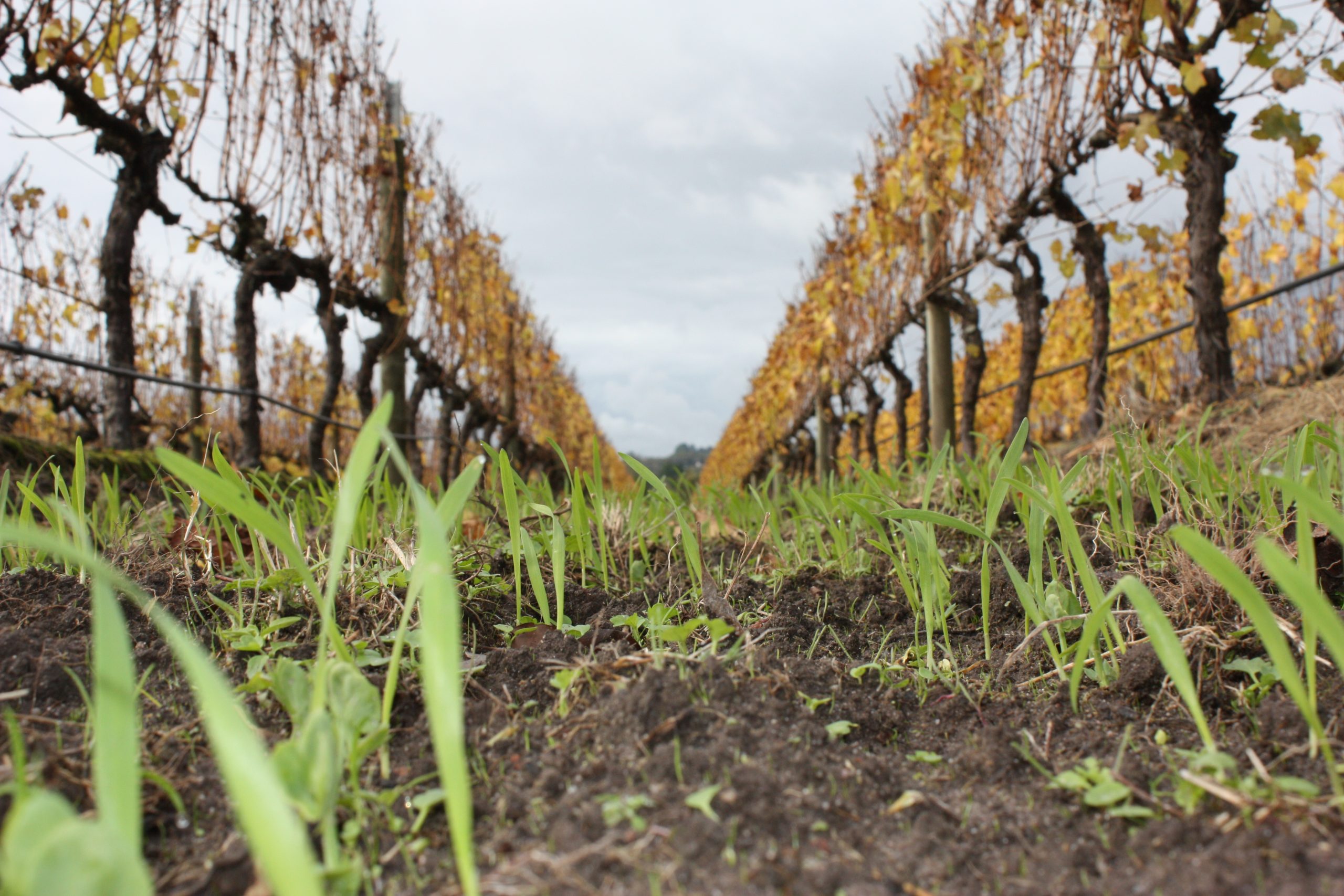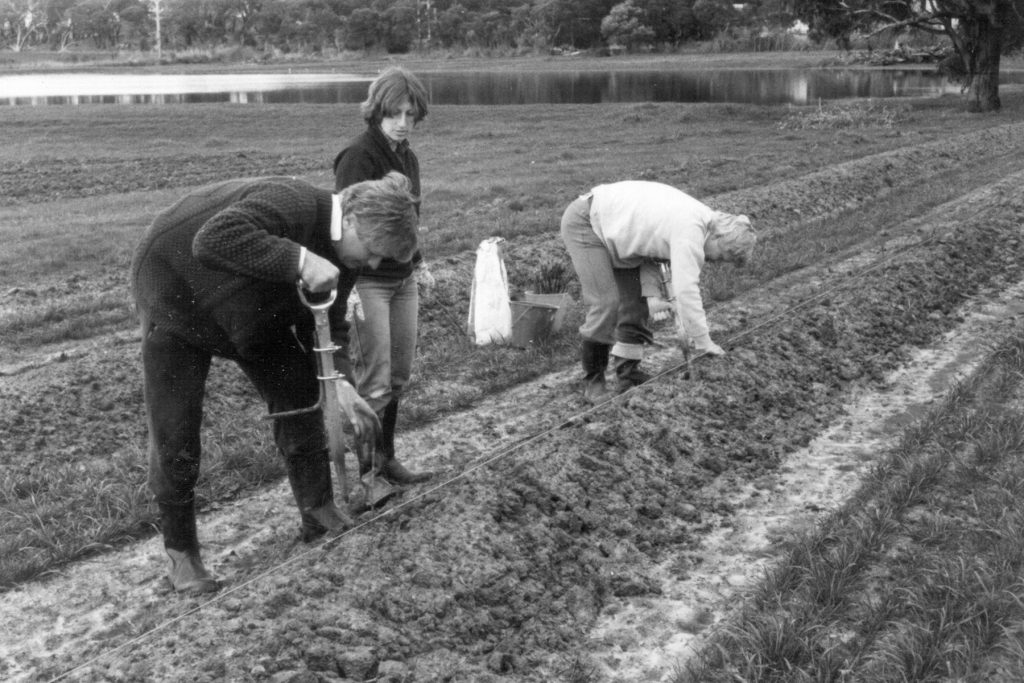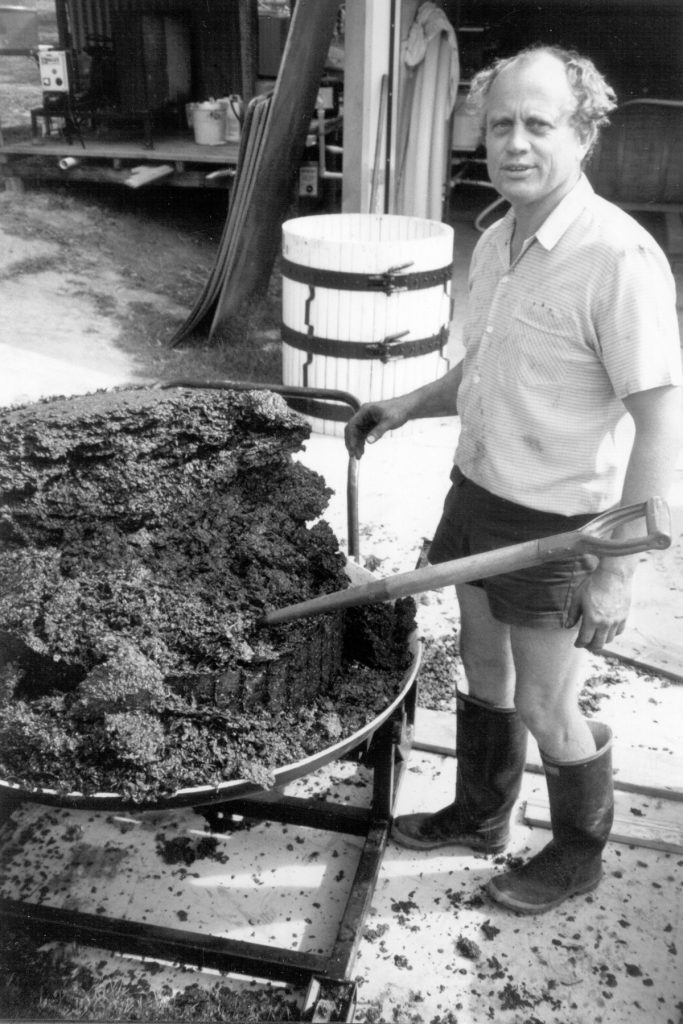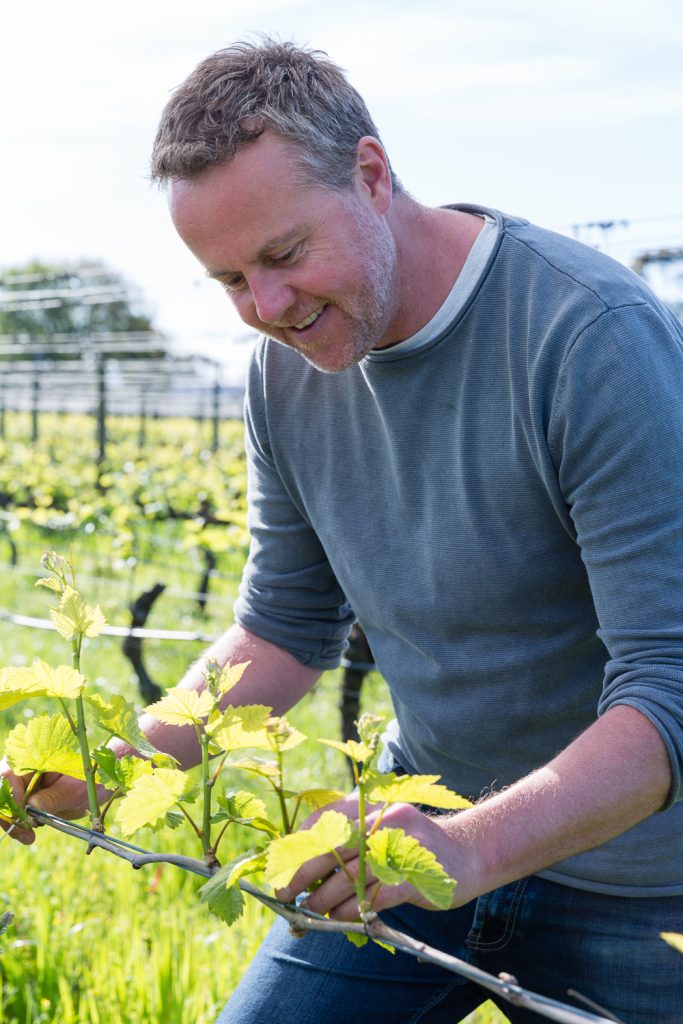ADVERTISEMENT
Marking four decades of game changing sustainability at Crittenden Estate

Image: Growth in the Crittenden Estate mid-row
1982 was the start of the Crittenden story. While the family might not have known it then, the winery would become a big part of kick-starting not just a thriving wine region but a new way to grow vines. Journalist Harrison Davies investigates why the anniversary of the winery is important to the industry as a whole.
In 1982, Crittenden Estate founders Garry and Margaret Crittenden decided to plant five acres of vines on the Mornington Peninsula – instantly doubling the aggregated plantings on the peninsula on top of starting their own winemaking operation.
The Mornington Peninsula didn’t have a history of winemaking at the time and wasn’t recognised as a winemaking region.
Since planting those first acres, Crittenden Estate went on to also bring attention to little known Italian winegrape varieties like Nebbiolo, Dolcetto, Barbera and Sangiovese, by being the first in Australia to produce these commercially. All of these varieties are now industry mainstays in their own right.

Image: Planting the original vines at Crittenden Estate in 1982
Current winemaker and the son of Garry and Margaret, Rollo Crittenden, was only six years old when the first vines were planted. He said his parents were merely ‘following their passions’ when those initial plantings of Cabernet, Merlot, Pinot and Chardonnay went into the ground with the help of family and friends on a single weekend four decades ago.
“When my Mum and Dad [who had been a horticulturist] planted the vineyard in September of 1982, they doubled the entire plantings on the Mornington Peninsula by planting just five acres of vines,” he said.
“I think there’s now a cumulative total of about 2600 acres of vines [in the region].
“Through the hard work of many vineyards, [the Mornington Peninsula] has become one of Australia’s flagship, cool climate wine regions; in particular, the wine region has been synonymous with growing some of the best Pinot Noir in the country.
“I don’t know that my parents had that sort of vision or that understanding that that’s where it would end up when they planted 40 years ago. But it is delightful to be where we are and we’re delighted to be a part of that process and still going.”
Chasing dreams of sustainability
‘Organic’ and ‘sustainable’ are words that are thrown around frequently now, but they weren’t when the Crittendens starting using sustainable and regenerative practices.
Crittenden Estate’s reputation as a bastion of sustainability only commenced around 25 years into the history of the brand. Prior to that, the land had been tended fairly conventionally through the use of chemical fertilisers, herbicides and pesticides.
Rollo said that, at that time, they had been looking at their soil and saw that it was chalky and unhealthy – less than ideal for growing healthy winegrape vines.

Image: Garry Crittenden
He continued to explain that while their contemporaries would reach for the chemical cupboard any time the vines were under stress, they thought there had to be a better way.
“I was brought up in a in a very can-do family; one that always thinks outside the square,” he said.
“Dad was always interested in thinking outside the square and trying to work out if there’s a different way of doing something, a better way of doing something or a new and innovative way of doing something.
“When you look at our sustainable and regenerative viticultural practices, they were born out of a realisation that we had a bit of a problem with our vineyard planted in 1982 and farmed fairly conventionally for the first 25 years.
“At the time we believed that our fruit quality should be getting better and better due to vine age, that wasn’t actually happening.
“We realised that through this conventional farming and the cumulative effects of the chemicals that we’d been administering for so long, they were cumulating in the soil and really killing out the beneficial fungus and bacteria that we’d like to see.
“[Dad] went into the vineyard 15 years ago and dug up a lot of dirt and it was like chalk, it would just break up into dust and dissipate – there was no life in the soil.
“We sought a lot of advice and through reading, the first thing we realised that we needed to do was to eradicate those synthetic chemicals.”
Since taking the leap to remove chemicals altogether from the viticultural practices used in the vineyard, Crittenden Estate has become a textbook example of how farming more sustainably can provide clear benefits.
The goal of the Crittenden family’s sustainability projects was always to improve soil health, rather than maintaining a static level of nutrition, by employing techniques like composting, inter-row cropping and organic sprays to help the vines grow as well as possible.
Rollo said the results have spoken for themselves and his family has seen the industry rally around the ideas they first championed 15 years ago.
“We do inter-row cropping and we use a mix of fava beans, snow peas and ryegrass and we let that grow up to a critical mass in the mid-row. Then, we roll that back into the soil with a crimping roller and that slowly breaks down into the soil,” he said.
“It helps retain moisture in the soil as well over the warmer months. The root system of those inter-row crops that we plant in between the vines, they penetrate down to that mycorrhizal layer and the root systems of those inter-row crops, the fava beans and ryegrass and peas, a site where the beneficial bacteria adhere to and function.
“The other thing that we do is we create around 400 cubic metres of compost each year. We do that by taking the by-product of the winery, which is the grape stalks and the seeds, and we combine that with local horse stables’ manure, and also something like wood.
“We create this huge compost heap on site and we break that down over the winter months, compost it down.
“Around October each year we spread the compost. So that’s adding organic material back into the soil and it’s also an inoculant for the beneficial fungus and bacteria that we’re looking to achieve.”
When Crittenden began using such organic practices, they were seen as ‘hippies’ and many did not take them seriously.
But as the years have passed, other producers have followed in their pioneering footsteps and embraced similar techniques to create healthier conditions for their own vines.
“I’m really proud when I show people through our vineyard or talk about our wines and have them taste our wines – to explain that this is an integral part of what we do and how we achieve what we do gives me a great sense of pride.”
Now and in the future
Since Crittenden Estate began its organic crusade, growing with sustainable practices has become commonplace throughout the winegrowing community and the value of caring for one’s soil is now widely recognised throughout the sector.

Image: Rollo Crittenden
Academic and plant pathologist Dr Mary Cole, from agricultural consultancy Agpath, has built her career on sustainable, healthy soil farming and has worked with Crittenden for many years.
Dr Cole said Crittenden has set a strong example for the rest of the industry to follow.
“Rollo was a student of mine at Charles Sturt University back in the ‘90s, so I’ve known the family for quite a while and they’ve always been forward thinking,” she said.
“Not only forward thinking, they’ve actually taken on information and they’ve implemented it.
“I’ve worked on and off with them all through this time and things like having good mid-row multispecies, having good green cover right across the vineyard from headland to headland – all of this is positive.
“They’ve taken on board that soil health effect is the paramount thing to watch that will lead to plant health and vine health, and therefore the quality of the wines.
“The recognition that they’re getting for their wines around the world is proof of the fact that if you do everything right in the soil, then everything above the ground is just almost a given.”
That global recognition of Crittenden’s leadership in sustainability and wine quality was cemented a handful of years ago when the winery became the ‘platinum’ winner at the 2020 BRIT/FIVS International Sustainable Winegrowing Competition, run by the Botanical Research Institute of Texas and FIVS, a French-based international federation of sustainability-minded wine organisations.
Sadly, Margaret Crittenden died two years ago, leaving her many contributions to Crittenden Estate, the Mornington Peninsula wine region and the wider wine industry as a significant and lasting legacy.
While Garry is now “semi-retired,” he remains a pivotal figure in the Crittenden vineyard and winery, leaving Rollo and sister Zoe to run the business.
Photos are courtesy of Crittenden Estate
This article was originally featured in the December 2022 issue of the Grapegrower & Winemaker.
To read more articles like this, subscribe online here.



